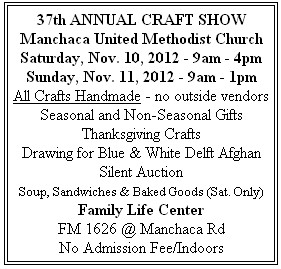


|
|
 |
***MISSING PERSON ALERT***
|
|
|
||||||
| To
join the COVNA Email List, click below and Find out the latest neighborhood news and
developments. |
2012 MEETING SCHEDULE
|
Advertise in the COVNA Newsletter Only $10.00/month. Reaches over 400 homes & Online at COVNA.org Email Hal Ferguson at: hferguson3@yahoo.com |
|
WATERING RESTRICTIONS CHANGE Stage 2 Watering Restrictions Austin Water implemented Drought Response Stage 2 Regulations on September 4, 2012, in response to combined storage in lakes Travis and Buchanan reaching the 900,000 acre-foot trigger outlined in the Drought Contingency Plan. Please note that watering days and times, and other restrictions may have changed due to recent revisions to the Water Conservation Code. • Hose-end irrigation may take place between midnight and 10 a.m. and between 7 p.m. and midnight on your assigned watering day. • Automatic irrigation systems may operate between midnight and 5 a.m. and between 7 p.m. and midnight on your assigned watering day. Please reduce system run times to fit within this schedule. • Please ensure that your system has a working rain sensor, or operate the system manually when rain is forecasted. • Watering with a hand-held hose or bucket is allowed at any time on any day of the week. • Drip irrigation is exempt from the schedule, due to increased efficiency. • To water trees, soaker hoses may be used under the drip-line of the tree canopy or you may use your automatic tree bubblers or refillable water vessels, i.e. a bucket with holes, Treegator®, etc. Irrigating trees in this manner is exempt from the watering schedule. • Washing vehicles at home is prohibited. If you need to wash a vehicle, you may do so at a commercial carwash facility. • Charity car washes are prohibited • Fountains with either a fall or spray of water greater than four inches are prohibited; unless necessary to preserve aquatic life. |

|
|
KEEP YOUR
NEW
You’ve just planted some new trees to enhance your landscape. In order for them to reach their fullest and most beautiful potential, you’ll need to be very careful about how you water them. The roots of your trees likely came in the form of a soil ball. Until the trees are able to establish regular roots in its new soil environment, it is critical to keep the ball moist. Generally, the safest and most effective approach for getting a new tree through the first year–and especially the first summer–is to irrigate regularly by dripping a known quantity of water slowly into the original root ball. To keep a 24-inch root ball moist not saturated during drought conditions of the kind Texas is currently experiencing will require you to moisten that ball with two or three gallons of water every four to five days. The cheapest way to meet these needs is to drill 1/4-inch holes in the bottom (or sides near bottom) of a 5-gallon bucket. Space the holes a few inches apart across the entire bottom of the bucket. Set the bucket next to the trunk and fill it with water every few days.
There are commercially available refillable bags that wrap around small trees. Some wrap around the trunk, some lie on the ground. There are also easily movable tree rings made of plastic tubing that attach to a hose and slowly soak the area around the tree. Find all three types and more by searching for “tree rings” using Google.
The most sophisticated way to water young trees is to insert two or three one-gallon-per-hour drip emitters which are attached to a length of plastic tubing and with a special fitting, to your hose. This can be attached to an inexpensive, electronic, battery-operated timer programmed to turn the water off after one or two hours. Check with the nursery where you bought your trees to see if they sell drip irrigation kits that you can use or adapt for this purpose. A good way to gauge whether or not you are giving your new trees the right amount of water is to probe the soil ball with a metal rod. If you are unable to push the rod easily more than a few inches into the ball, you’re not applying enough water. If the rod slides easily all the way through the ball, you’re more than likely over-watering your plants. |
|
| CHANGES TO WATER CONSERVATION CODE PRV Rebates Can Help You Save Water and Money Pressure regulating valves (PRVs) are a type of valve installed in a property's plumbing in order to regulate water pressure. They also help conserve water because higher water pressure leads to more waste. PRVs are compact, inexpensive devices that reduce the high incoming water pressure from the city mains to a lower, more functional pressure for distribution to the home. They also maintain a set pressure in the home (usually between 50 and 65 pounds per square inch, or psi) to ensure that the home pipes and appliances operate under a safe, but satisfactory pressure. PRVs are also used to moderate excessive pressure to irrigation systems. If your irrigation system is misting, you might have high pressure. The City of Austin offers two separate rebates (up to $100 each): • PRV for irrigation system (requires Austin Water irrigation evaluation prior to beginning work) • PRV for the house requires a static pressure 80 psi and no previous PRV installed (no Austin Water site visit required) To be eligible for the rebate, you must have
water pressure over 80 pounds psi and not have a PRV already
installed. To find out the static pressure at your home or to
schedule a free irrigation evaluation, call 974-2199. |
|
|